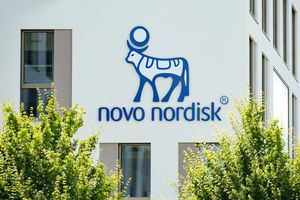
November 19, 2025 – In a significant development set to reshape the digital marketing landscape, Adobe (Nasdaq: ADBE) today announced a definitive agreement to acquire Semrush Holdings, Inc. (NYSE: SEMR) for approximately $1.9 billion in an all-cash transaction. The news sent shockwaves through the market, propelling Semrush's stock to an astounding jump of over 74% in early trading, signaling strong investor approval for the strategic move. This acquisition underscores Adobe's aggressive push to expand its footprint in the burgeoning market of marketing analytics and SEO tools, integrating Semrush's robust platform into its expansive Creative Cloud and Experience Cloud ecosystems.
The immediate implications of this blockbuster deal are profound. For Semrush shareholders, the offer represents a substantial premium, delivering significant value. For Adobe, the acquisition provides a powerful new suite of capabilities, instantly bolstering its competitive position against rivals in the digital experience platform space. The all-cash nature of the deal also highlights Adobe's strong financial position and its commitment to a swift and clean integration, pending regulatory and shareholder approvals.
Detailed Coverage: A Strategic Play in Digital Marketing
The agreement, formally signed on November 18, 2025, and announced this morning, values Semrush at $12.00 per share. This figure represents a compelling premium of approximately 77% to 78% over Semrush's closing stock price of $6.76 on November 18, 2025, the day prior to the announcement. Such a substantial premium is a clear indicator of Adobe's perceived value in Semrush's technology, customer base, and market position. The transaction is expected to finalize in the first half of 2026, subject to customary closing conditions, including regulatory clearances and approval from Semrush's stockholders.
Key players in this transaction include both Adobe's and Semrush's Boards of Directors, both of whom have unanimously approved the deal. Crucially, Adobe has already secured commitments from Semrush's founders and other significant stockholders, collectively representing over 75% of the voting power, to vote in favor of the acquisition. This pre-secured support significantly de-risks the shareholder approval process, paving a clearer path for the merger. The market's initial reaction has been overwhelmingly positive for Semrush, with its shares reacting precisely as expected to such a premium offer.
The acquisition is poised to integrate Semrush's leading SEO, content marketing, social media management, and competitive research tools directly into Adobe's comprehensive suite of digital marketing and creative solutions. This move is designed to provide Adobe's customers with an even more powerful, end-to-end platform for managing and optimizing their digital presence, from content creation to distribution and performance analysis.
Strategic Realignments: Winners and Losers in the Digital Marketing Arena
The acquisition of Semrush by Adobe creates a ripple effect across the digital marketing ecosystem, identifying clear winners and posing challenges for others. Foremost among the winners are Semrush's (NYSE: SEMR) shareholders, who stand to gain substantially from Adobe's all-cash offer of $12.00 per share. This represents a significant premium of approximately 77% over the company's prior closing price, delivering immediate and substantial value to investors.
For the employees of Semrush, the impact is likely to be a mixed bag. While integration into a tech giant like Adobe (Nasdaq: ADBE) can offer new opportunities for growth, access to greater resources, and exposure to a broader range of projects, particularly for those in critical product development and AI roles, it also brings the specter of redundancy. Overlapping functions in areas such as administration, sales, or support could lead to job losses, and the cultural integration between two distinct corporate entities will present its own set of challenges.
Semrush's customer base also faces a nuanced outlook. On one hand, the integration of Semrush's robust SEO, content marketing, and competitive analysis tools with Adobe's expansive Creative Cloud and Experience Cloud promises a more unified and powerful marketing ecosystem. This could lead to enhanced features, streamlined workflows, and deeper data insights, especially as Adobe champions AI-powered marketing and generative engine optimization (GEO). Customers could benefit from a single, comprehensive platform for managing their entire digital presence. Conversely, there's a potential risk of price increases as Semrush's services are folded into Adobe's typically higher-tier pricing structure. Changes in product functionality, support, or a shift in the platform's development roadmap might also occur, which may not align with all existing customer needs.
Adobe itself emerges as a significant winner in this strategic maneuver. The acquisition critically enhances its Digital Experience Cloud, filling a vital gap in organic search visibility, keyword research, site auditing, and competitive intelligence—all crucial elements for modern digital marketing success. This move strongly aligns with Adobe's commitment to AI and machine learning, particularly as Semrush has been at the forefront of developing GEO tools that monitor brand visibility across evolving platforms like large language models (LLMs) such as ChatGPT and Gemini. By integrating Semrush, Adobe significantly strengthens its position to lead in the evolving AI-driven marketing landscape, expands its market reach, and gains access to more comprehensive data insights for precise audience targeting.
The competitive landscape for standalone SEO and marketing analytics platforms, such as Ahrefs and Moz, will undoubtedly intensify. These direct competitors to Semrush will now face a much more formidable rival. Adobe's immense resources, established enterprise customer base, and comprehensive marketing suite, combined with Semrush's specialized tools, create an integrated offering that could be challenging for smaller, focused platforms to match. This could lead to increased competitive pressure, potential customer attrition, and a necessity for Ahrefs and Moz to further differentiate their services or explore strategic partnerships. Google (Nasdaq: GOOGL), while not a direct competitor in the same way, operates in a unique position. While a more integrated Adobe-Semrush offering could provide marketers with robust tools that potentially shift some marketing spend away from purely Google-centric advertising, it also validates the importance of robust digital marketing, which ultimately drives more online activity and engagement, indirectly benefiting Google's broader ecosystem.
Wider Significance: Reshaping the AI-Driven Marketing Frontier
Adobe's acquisition of Semrush is not merely a transaction; it's a strategic maneuver that profoundly reflects and accelerates several pivotal trends in the marketing technology and artificial intelligence landscape. At its core, the deal is a direct response to the burgeoning importance of Generative Engine Optimization (GEO). As AI-driven generative models like ChatGPT, Google SGE, and Gemini increasingly influence how consumers discover information, optimizing for these large language models (LLMs) becomes as critical as traditional SEO. Adobe explicitly aims to "unlock GEO for marketers as a new growth channel alongside their SEO," recognizing this fundamental shift towards content optimization for AI synthesis rather than just link visibility.
This move also solidifies Adobe's ambition in AI-driven customer experience orchestration. By integrating Semrush's deep expertise in organic search, content insights, and competitive analysis, Adobe (Nasdaq: ADBE) can offer marketers a more holistic understanding of their brand's presence across diverse digital touchpoints, including traditional search and AI interfaces. This will empower businesses to deliver more unified customer experiences, streamline workflows, and leverage predictive analytics for content performance in an era where autonomous AI agents are becoming central to customer interactions. The acquisition further underscores the ongoing trend of marketing stack consolidation, where businesses seek to integrate sophisticated software solutions into unified platforms for enhanced efficiency and deeper insights.
The ripple effects of this acquisition will be felt across the competitive landscape. Adobe's position against major customer experience management rivals such as Salesforce (NYSE: CRM) (Marketing Cloud), Oracle (NYSE: ORCL) (Responsys, CX Cloud), Sitecore, and SAP (NYSE: SAP) (Emarsys) will be significantly strengthened. The addition of Semrush's specialized SEO and GEO capabilities provides a potent differentiator, potentially attracting new enterprise clients and bolstering retention. For Semrush's direct competitors in the SEO/SEM space, including Ahrefs, Moz Pro, SE Ranking, Similarweb Platform, and Serpstat, the challenge intensifies. They will now contend with an integrated offering backed by Adobe's immense resources and extensive enterprise reach, potentially necessitating further differentiation or strategic partnerships. Meanwhile, marketing agencies and system integrators within the Adobe ecosystem will need to rapidly upskill their teams in GEO and AI-driven marketing strategies to fully leverage these new integrated capabilities.
Given the $1.9 billion valuation, the acquisition will undoubtedly undergo rigorous regulatory scrutiny. The transaction will likely be subject to review under the Hart-Scott-Rodino (HSR) Act by the Federal Trade Commission (FTC) and the U.S. Department of Justice (DOJ). Under the current administration, there's heightened scrutiny on "Big Tech" and vertical integrations, with revised Merger Guidelines that are more critical of mergers and focus on potential "moat-building" and data aggregation strategies by dominant platforms, especially concerning AI. Adobe's previous attempt to acquire Figma for $20 billion was ultimately abandoned due to regulatory concerns in the UK and EU, serving as a stark reminder of the regulatory environment. While the Semrush deal is smaller and focused on additive capabilities, Adobe will need to navigate this process carefully.
Historically, Adobe has consistently grown through strategic acquisitions, a pattern this deal firmly upholds. Acquisitions like Aldus Corporation in 1994, Macromedia in 2005, Omniture in 2009, and Marketo in 2018 were pivotal in building out its Creative and Marketing Clouds. The Semrush acquisition aligns perfectly with this strategy: acquiring specialized capabilities to fill gaps, enhance existing offerings, and adapt to evolving market demands, rather than building everything in-house. This move is also part of a broader trend of consolidation within the martech sector, as platforms seek to offer more comprehensive, AI-first, and omnichannel solutions that empower marketers with deep personalization and measurable impact.
What Comes Next: Integration, Innovation, and Evolving Market Dynamics
The path forward for Adobe (Nasdaq: ADBE) and Semrush (NYSE: SEMR) will be defined by a critical period of integration, strategic innovation, and adaptation to evolving market dynamics. In the short term, leading up to the expected closure in the first half of 2026, Adobe will be intensely focused on meticulous integration planning, identifying key personnel, technological synergies, and customer segments to ensure a seamless transition. Crucial will be clear communication to both existing Adobe Experience Cloud customers and Semrush's user base, reassuring them of continued support and outlining the enhanced value proposition. Talent retention from Semrush, particularly those with expertise in SEO, content marketing, and AI, will be paramount. Concurrently, Semrush will need to maintain its operational excellence and product development roadmap while navigating employee morale and securing final shareholder approval.
Looking further ahead, the long-term possibilities are transformative. For Adobe, the acquisition is a powerful catalyst for its AI-driven marketing strategy, particularly in solidifying its leadership in Generative Engine Optimization (GEO). This will enable Adobe to offer marketers a comprehensive digital experience that spans traditional search, owned channels, and the rapidly growing influence of Large Language Models (LLMs). The combined entity is poised to gain a significant competitive advantage in AI marketing, leveraging cross-sell opportunities with Adobe's Creative Suite and bolstering its Digital Media Annual Recurring Revenue (ARR) through Semrush's enterprise solutions. For Semrush, becoming part of Adobe provides access to an expansive customer base and vast resources, accelerating its product development and market penetration while integrating its tools into a broader, more powerful ecosystem.
The market opportunities arising from this union are substantial. The rise of GEO presents a significant first-mover advantage, positioning the combined entity to lead in optimizing brand visibility for generative AI. Marketers stand to benefit from a truly unified marketing stack that bridges creative content creation with SEO and brand visibility analytics, leading to streamlined workflows and more data-driven creative decisions. However, challenges loom, including the inevitable competitive response from rivals who will accelerate their own AI and integration strategies. The complexity of merging two distinct technological architectures and customer bases will also test Adobe's integration capabilities, and the deal will continue to face regulatory scrutiny, albeit on a smaller scale than previous Adobe acquisition attempts.
Several potential scenarios for product integration could unfold. The most favorable outcome would be a deep, seamless integration where Semrush's keyword research, site audits, competitive intelligence, and online visibility tracking are intuitively accessible within Adobe Experience Cloud, directly influencing content creation in Creative Cloud applications. This could also lead to the development of groundbreaking AI-powered tools designed to track how brands are referenced by LLMs like ChatGPT and Google's Gemini. Alternatively, some of Semrush's more specialized tools might remain as distinct, yet integrated, modules, offering flexibility. In the competitive landscape, a successful integration could cement Adobe's position as a dominant force in the AI-driven marketing and creative ecosystem, potentially triggering further M&A activity across the industry as other players seek to enhance their AI capabilities, ultimately spurring broader innovation. For customers, the promise is unified, streamlined workflows and enhanced insights, though a learning curve during the transition period will necessitate robust support and training from Adobe.
Comprehensive Wrap-Up: A New Era for Digital Experience
Adobe's (Nasdaq: ADBE) acquisition of Semrush Holdings, Inc. (NYSE: SEMR) for $1.9 billion marks a pivotal moment in the evolution of digital marketing, signaling a clear strategic direction towards an AI-first, integrated ecosystem. The immediate 74.48% surge in Semrush's stock price underscores the market's enthusiastic reception of the substantial premium offered to shareholders, making them immediate and undeniable winners. While employees and customers face a mixed bag of opportunities and potential adjustments, Adobe's strategic positioning is significantly bolstered, enabling it to offer a more comprehensive and competitive digital experience platform. This move places Adobe at the forefront of Generative Engine Optimization (GEO), a critical new frontier in brand visibility driven by large language models.
Moving forward, the market will be closely watching the integration process. Success hinges on Adobe's ability to seamlessly weave Semrush's powerful SEO and content marketing tools into its Creative Cloud and Experience Cloud, delivering on the promise of unified workflows and enhanced, AI-driven insights for marketers. The deal will undoubtedly intensify competition for standalone SEO platforms like Ahrefs and Moz, potentially spurring further consolidation and innovation across the marketing technology sector. Regulatory bodies will maintain a watchful eye, ensuring the acquisition does not stifle competition, especially given the current climate of increased scrutiny on Big Tech.
The lasting impact of this acquisition will be the acceleration of AI's role in every facet of digital marketing. As brands increasingly seek to optimize their presence not just for traditional search engines but also for generative AI platforms, the combined Adobe-Semrush entity is uniquely positioned to lead this charge. Investors should monitor the progress of integration, the launch of new AI-powered features, and the competitive responses from other industry players in the coming months. This acquisition is not just about expanding Adobe's product portfolio; it's about redefining the future of how brands connect with their audiences in an increasingly AI-driven world.
This content is intended for informational purposes only and is not financial advice






